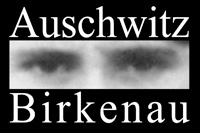




Auschwitz III-Monowitz
Initially, it was one of Auschwitz sub-camps, created in October 1942 on the area of the expelled and demolished Polish village of Monowice (German: Monowitz), 6 km from Auschwitz I, in connection with the construction by a German company – IG Farbenindustrie conglomerate – of the Buna-Werke synthetic rubber and fuel plant.
In November 1943, Monowitz was raised to the status of concentration camp, to which all the “industrial” sub-camps in the Auschwitz complex were subordinated. Camp population grew progressively: from over 3,500 prisoners in December 1942 to over 6,000 in late 1943 and over 11,000 in July 1944 (mainly Jews). Prisoners were incarcerated in 60 barracks.
In January 1945, the majority of prisoners were evacuated on foot to Gliwice, from where they were transported by rail to the Buchenwald and Mauthausen camps. Nobel Prize laureate Elie Wiesel and famous Italian writer Primo Levi were among others the prisoners of the Monowitz camp.
Auschwitz III-Monowitz camp was the first of three main camps of the Auschwitz complex liberated by the Red Army soldiers. It took place on Saturday, January 27, 1945 before noon. In the afternoon, the camps Auschwitz I and Auschwitz II-Birkenau were liberated.
